Integrated agriculture can benefit beef producers. Intensive, specialized crop production has several widely agreed upon downfalls. These specialized systems tend to have stationary yields all while profitability is widely dependent on a global market over which we have little control. Dependence on these practices leads to reliance on fertilizers due to nutrient depletion in the soil, soil erosion and contamination of waterways due to run off.
Benefits of Cover Crops to Soil Health
Soil scientists and agronomists agree that the addition of cover crops to a cropping rotation can improve soil quality and health through:
- decreased erosion
- increased microbial activity
- increased carbon sequestration
- more soil aggregates
- increased conservation of moisture in the soil.
All of these benefits due to a more extensive rooting system and ground residue protecting the soil for more months out of the year.
Benefits of Cover Crop Grazing to Beef Producers
The addition of livestock, most commonly beef cattle, to this rotational cropping system can help this system economically viable. Here are four benefits of grazing cover crops to cattle producers:
-
Grazing cover crops extends the grazing season.
The extended growing season leads to decreased costs of stored feeds. Supplementation needs are also lessened due to the animal’s ability to preferentially graze to meet their nutritional needs.
According to a study by Practical Farmers of Iowa, grazing cover crops through integrated agriculture can offset winter feed storage costs by up to $40,000. Of course, it is important to mention that labor costs increase. Grazing cover crops requires more intensive management of the land and cattle. The cost may be offset by the reduced need to cut and bale excessive amounts of hay or corn silage. Feed should still be stored for emergency use. An emergency might be a failed cover crop or a stressed crop that has accumulated too much nitrate to graze.
-
Grazing cover crops can improve cattle’s nutritional plane.
Animals consuming a cover crop mix can choose plant parts such as leaves over stems which are higher in protein and non-fiber carbohydrates and lower in fiber. Cattle can also choose less mature plants for the same nutritional reasons. Therefore, by grazing a mix of annual crops, cattle can consume more protein and carbohydrates for performance than a balanced ration of roughages and grain supplements. Therefore, grazing cover crops can improve nutrition and eliminate the cost of ration balancing and mixing.
-
Animal performance can increase when grazing cover crops.
Growing steers typically have increased feed intake when consuming cover crops as opposed to a mixed ration. Increased intake results in increased weight gains. Heifers and cows on the higher plane of nutrition provided by cover crops can have increased reproductive performance.
-
Grazing cover crops rotationally can result in forage regrowth.
When animals graze a paddock for the first time, they open the top canopy and allow sunlight to reach shorter plants. When the cattle are removed from that section, plant growth is stimulated. If allowed enough time, forage may recover sufficiently enough to allow the area to be grazed again. Grazing regrowth is like bonus forage and can also contribute to decreased feed production and storage costs.
Integrated Agriculture
Integrating cropping systems with grazing benefits soil health, grazing livestock, and your pocketbook. Grazing cover crops specifically benefits beef production by extending the grazing season, thereby saving on winter stored feed costs, improving the animals nutritional plane resulting in improved animal performance through increased intake and gains, and bonus regrowth can also be grazed, again saving on winter feed costs. Don’t forget to take proper precautions before allowing cattle to graze cover crops.

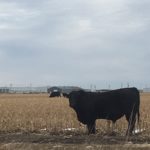
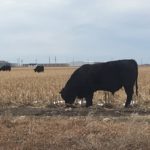
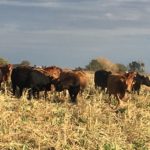
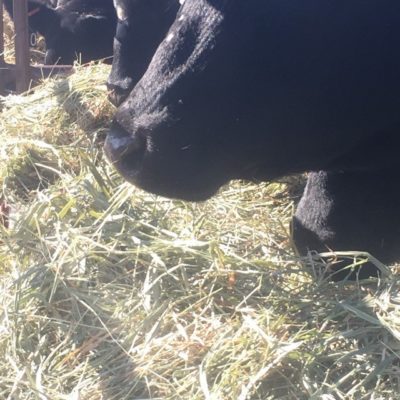

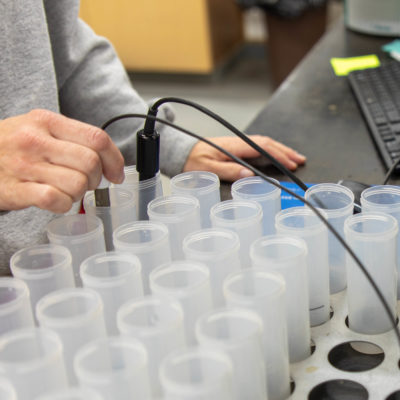

[…] ground, prevent erosion, and support diverse microbial communities that build soil structure. The integration of cattle grazing cover crops has allowed this practice to be more economical for the producer. Grazing cover crops adds manure […]
[…] cover crops are available for fall grazing on crop land, livestock will certainly benefit. Cover crop mixes typically have some legume species, some grass species and often brassicas. The […]
How helpful that giving the animals better nutrition helps with performance. I am starting a new agricultural business this year. I will find a good livestock breeder in my area.